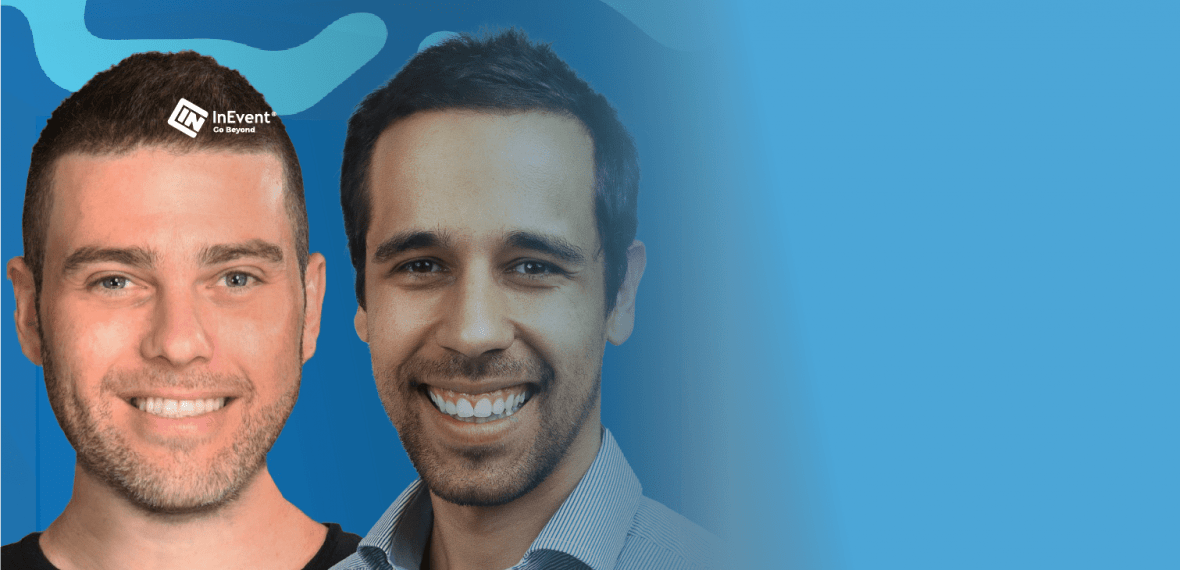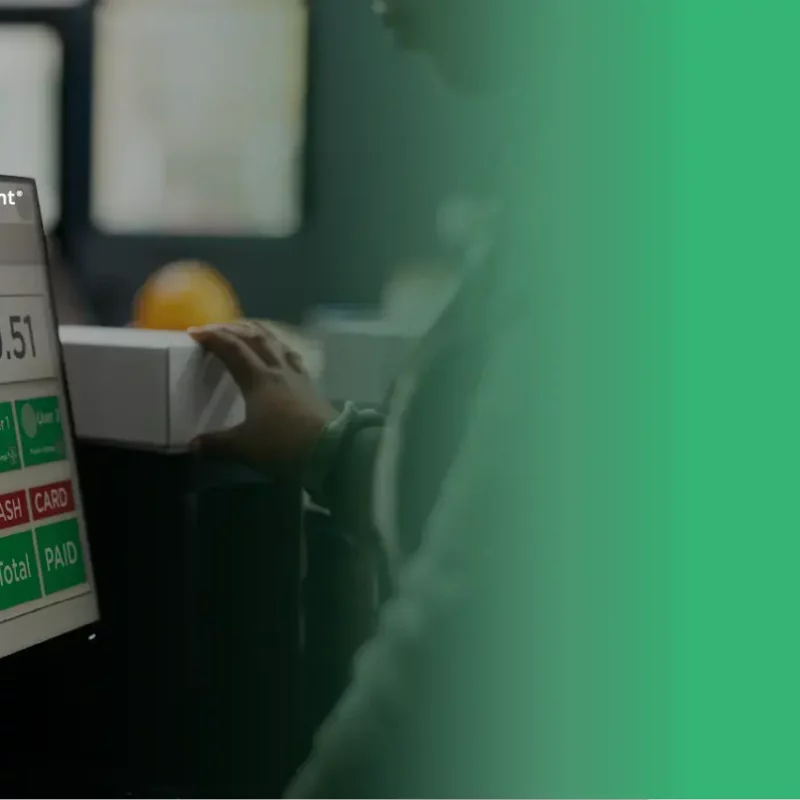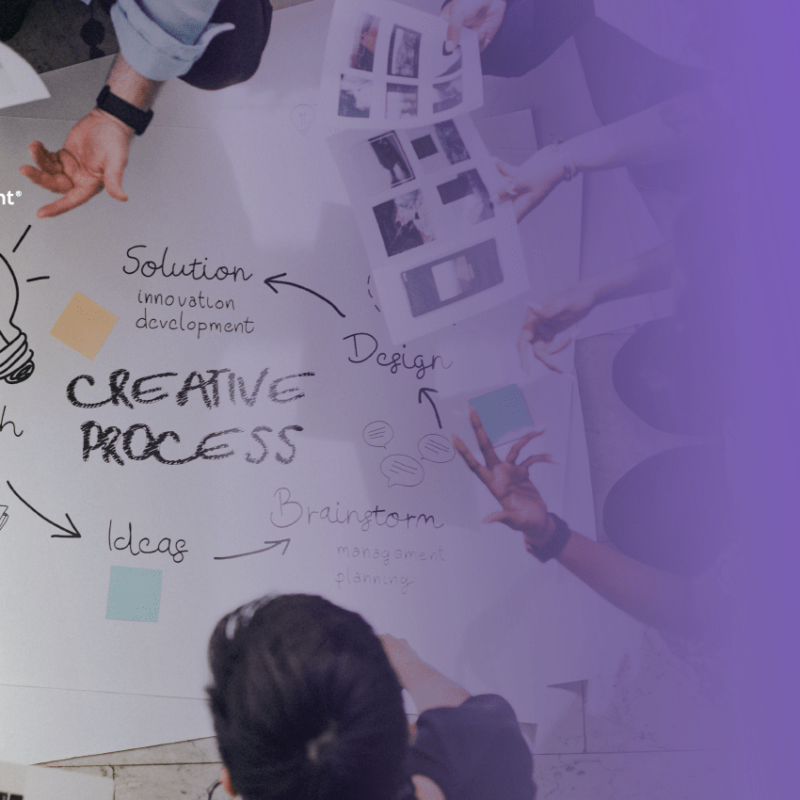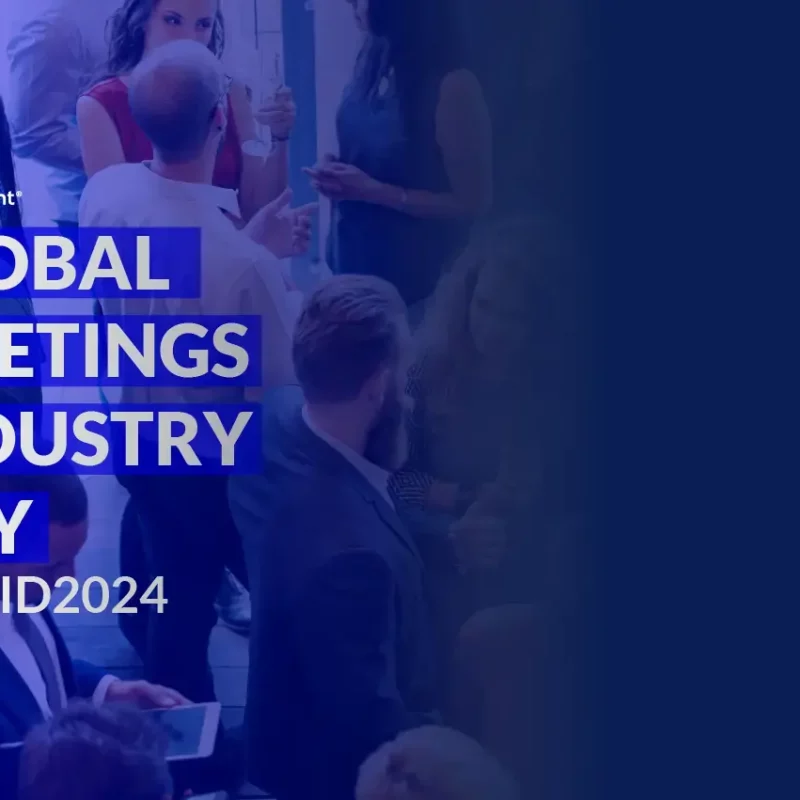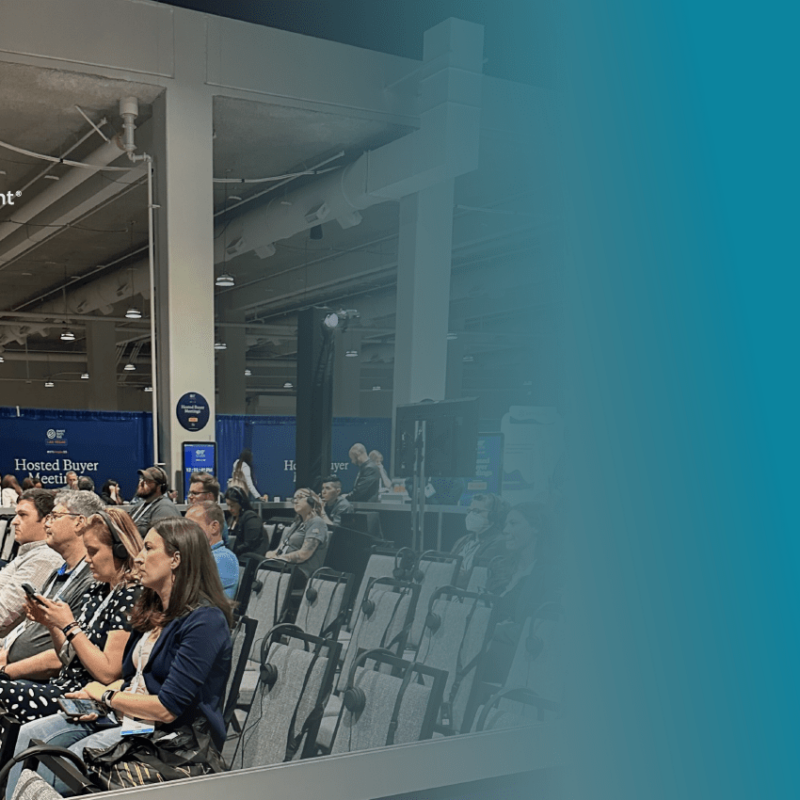2024 Must-Know Predictions for the Event Tech Industry by Pedro Góes.
Introduction:
As we stand on the brink of another exciting year in technology, there are few who can match the expertise and insight of Pedro Góes, CEO of InEvent. In a vibrant exchange with Elad Rosanski, CEO of XTag and Event Market partner, Góes sheds light on what 2024 might bring for the Event Tech Industry. Covering an array of fascinating event tech predictions, keep reading to discover the trends and innovations that promise to redefine how we organize, experience, and perceive events in this fast-paced sector. Get ready as we delve into this conversation and share some must-know insights about the future of event technology.
Here’s the full interview:
Elad Rosanski:
Hello. Hello. Welcome to another great episode of All-in-Person. We keep going with our partner showcase, and today, we have Pedro Góes, CEO of InEvent. Pedro is, as I said, the CEO of InEvent, a Y Combinator venture-backed company providing an event marketing and sales platform for Forbes 2000 global companies, including Amazon, Coca-Cola, KPMG, and many more amazing brands.
Pedro started a company during college, in which he had more than 10,000 monthly active paying users. That’s really impressive. He’s a Y Combinator alumni, a 40 under 40 founder by Association magazine, and a UK Event Tech award winner. As you see, Pedro is, you know, very, very unique in the event space industry and in general, and I couldn’t be more excited about having Pedro with me here today.
So, Pedro, thank you for having the time for me today.
Pedro Góes:
Thanks so much. A lot. You know, it’s a pleasure to be here. You know, like, we value the community. You know, like, it’s great to be here talking to you because you are a key member of our industry. You know, like, you know really well how the industry works, how you have a lot of experience and didn’t just jump into the industry during the pandemic.
So I really appreciate being here and talking to you.
Elad Rosanski:
Amazing. Amazing. Thank you, Pedro. We’ll jump right into the questions because I think you have so many insights to show and share with our great audience. To start, I just mentioned a little bit about InEvent and, you know, your achievements and the amazing client base you have.
But anything you can tell us about InEvent, your journey, what is special and unique about InEvent in the market?
Pedro Góes:
Well, I think InEvent is one of the few true all-in-one solutions that we currently have on the market. It’s really hard to define all-in-one, but we came up with a definition in the last year that we think is quite accurate. It is a combination of five key products, you know, and those are five strong products.
The first one is a mobile app. Having a strong mobile app is really key.
The second thing is having registration systems. So, you must have strong, powerful registration options on the platform.
The third one is a strong website builder. So, there is the ability to drag and drop templates and put together that information on the platform. That’s really important as well.
The fourth thing is a strong kiosk management system, so you can print badges of various sizes and formats and support these on mobile devices.
The fifth thing that came through during the pandemic was a powerful virtual streaming system. So you can do videos, webinars, and more. So, being like all in one is the definition of having those five things together.
I think very few companies, I think they’re only top ten or 12 companies that can really do that. And I think one of InEvent’s core abilities is the ability to do all those things well.
Elad Rosanski:
So, it leads me directly to the next question. You said that you have those five pillars, if you will, in the product, and you also have a very strong; you can call it Marketplace or partners ecosystem, Event Market. We’ve been through this process. So we know that you’re one or maybe the only company I know that the partner department and the process that we had to go through to become a certified partner by any event. It was really not something you see in other companies.
It’s pretty unique, and it’s pretty thorough. And I’d like you if you please because many people listening to us are dealing with partnerships; specifically, it’s a Partners’ showcase. I’d like you to share more about how you came up with this process. Maybe someone you saw do that in Y Combinator, or anything you can share about how you came up with it, and also if you can explain more about what you do to make it successful.
Pedro Góes:
Very good. Now, that’s a great question. You know, when we started the company back in 2013, and so we are actually really small, and we were really small for many, many, many years up until 2018, 2019, when we decided to, like, let’s grow this to be a larger company.
Up to 2018 or 19, we had about 20 employees or so. So we’re on that small stage and doing a little business. And then we decided to grow. We applied to Y Combinator, we got venture capital, we raised more than $5 million, and we used that capital to grow the team basically. The pandemic really helped us develop this growth.
One of the things about starting as a small company is growing quickly. Today, we’re almost at 200 employees, and we saw two main challenges in the industry. The first thing we saw was how Cvent is so huge; they have 5000/6000 employees, and the second companies are the three companies like Stova, Bizzabo, and others that have no more than 300 or 400 employees.
So Cvent is just this massive company that has access to all, you know, worldwide offices that can deploy very cheaply locally. Right. So what we thought about that is like, and this is not clear to a lot of people in the industry, they think, we’re going to compete, and it’s going to be fine. Like it’s really hard to compete with, you know, these massive companies because they can outbid you and they can actually provide you lower prices because they have enough that’s really close to the client, and they just can ship things from like $10.
And when you have to, you know, travel 2000 hours to get to where the client is. So, that problem posed two challenges. The first one was, what do we do about it in terms of pricing? The second thing is how can we actually be able to compete both in location and also being close to the client?
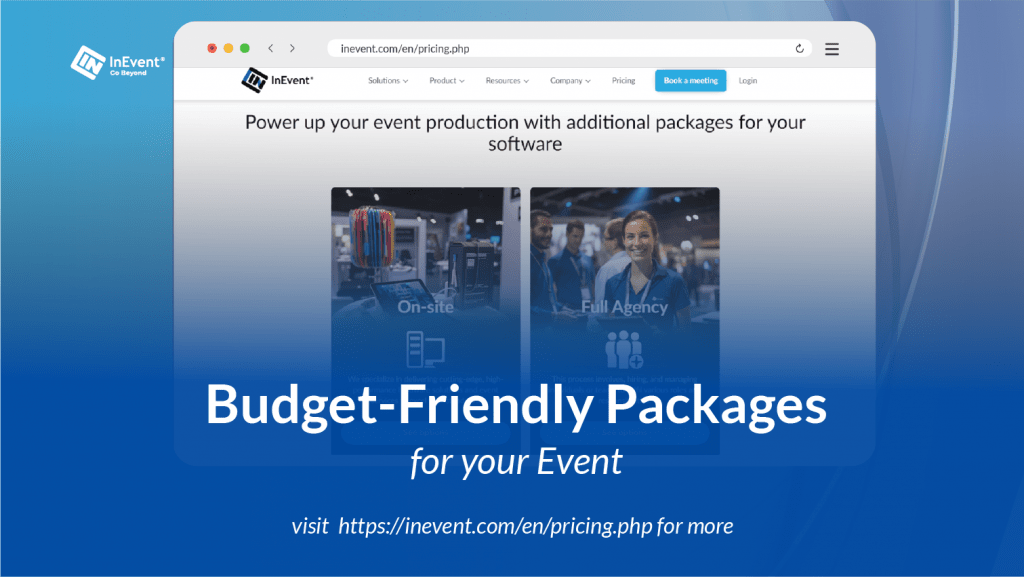
So the first thing we did was maybe we need to be more cost-effective, right? Let’s have plans that are going to be non-enterprise, and let’s have plans that are going to be enterprise. We did a task during the pandemic like we had our plan, a client plan that was called the Express plan, and the basic plans that were really affordable.
They were like $1,000 each, and they can run two or three events with them. Then, we had the enterprise plans, which are like advanced full plans, and these are what we call our plans. The challenge with them is that we put a cohort. We compare both plans, like the reviews we got from them.
And it was crazy because from 200 reviews we got during the pandemic years up to today, we had 100% of them. We had eight complaints, right? Which were like one or two stars on our profiles online. 100% of those reviews came from Enterprise-based clients. So that was a big problem as we thought. Now that’s not going to work well, like these clients, who don’t get proper support.
They don’t get a dedicated project manager;
they don’t get 24/7 customer support. That’s not going to work well. So we need to drop this plan, and we cannot compete, you know, at $1,000 in times know these massive companies, they can offer those plan at $1,000, but we can’t. So we had to go to Enterprise-only plans, and then our costs rose because our pricing now is like $5,000 or $6,000 to get started.
So we realized we need to be able to lower the costs in other areas. And shipping everything from the U.S. or even from Europe, where we have offices, is too expensive. So we said, let’s create a proper partner program. In this partner program, we want to achieve two things. The first would be to lower costs because our partners will be closer to the client.
Instead of having just one or two partners, we decided to have a proper partnership with 50 companies or so, and then they have offices locally. Then, they can ship the hardware and support from this office, and InEvent can bill that if that’s the case for them. So the costs will be reduced, and the service will be the same because we use standard hardware across our product line.
The second thing we wanted to do was basically to have something the client would feel supported, right? We didn’t want something that the partnership program would be loose. Like the client would say, I’m working with InEvent, but when there’s a problem, they just throw that at the partner, and then there is no one actually to solve my problem because we want to have these high-end service support for our clients.
So our partner program became that, like diversity across the globe, you know, many product categories, that we work with, especially hardware and support, but also very, you know, diligent. So we want to meet with our partners. We want to have calls with them. We want to sign contracts. We want to make sure that when we are working with them and the client has a problem, we are going to be able to count on the partner. They’re not going to disappear. They’re actually going to be able to integrate product lines, work with our developers, and do things. So a lot of people don’t want to do this these days. They just want a quick transaction. They’re like, I did something for you, I disappear when the money’s gone, but we couldn’t have that in our industry.
So we work with key clients like US presidents and Secretaries of State and Federal US organizations, and these agencies require a standard of support that only very few partners in the world can do. So that’s a little bit of the background on how that happened and why we have such a diligent partner program.
Elad Rosanski:
Yeah, I really appreciate it. I remember that we’ve been through the process. We were like, It feels like we’re doing a partnership with Microsoft. It felt really thorough and really organized, and I loved it. I understood where it comes from, right? Because in our industry, in the event space, it’s all about trust, right? And specifically, we talk about it all the time.
The event, as we call it in Xtag – the moment of truth, is like the clients who trust us and believe that, at this moment, we will deliver the best at the best level. Right. so, yeah, being through this process, actually, we’ve learned a lot. So thank you for that and for setting up this high standard.
Going to the next question, Pedro and you discussed that also around the same area of partnerships. So you have those pillars, and you consider yourself an all-in-one platform but still have partners, which is kind of what some people say: If you’re an all-in-one platform, maybe you don’t need partners. I don’t think it’s true.
I agree with you. But I’m really curious to hear your take – ALL-IN-ONE VS INTEGRATED PLATFORMS. And it’s not, you know, black and white because, in your case, it’s all-in-one but still integrated with other tools. So what’s your take? Can you do an all-in-one like Cvent, for example? Like, really, really all in one, or does it have to be integrated, and actually, is it better than the all-in-one like Cvent? What do you think?
Pedro Góes:
Well, we discussed it multiple times, internally and with investors and, you know, as peers in the industry as well. And I think that’s an ongoing discussion. The only way to be called all-in-one is to be like an agency provider, a service provider. You have to do the catering, venue selection, and, you know, provide manager services. I don’t think so. I think there is a split between, you know, service providers and event tech providers. Right? And there are also other providers in the industry that we can also think about. Like there are venues, for example, venue management is an entire category by itself, right?
So, I think that the definition of what we consider all-in-one is the definition of the event, right? It’s within the event industry, right in our space. I think the definition is that is having those five main product lines and being able to offer them really well for our clients. Now, sometimes when you’re working with large corporations, and they request things that you do not have, like I was talking to our client last week, and they say, do you do speaker management like in the same of actually speaker selection?
So I can actually tell your company what I am looking for. I’m looking for this type of person to do this type of presentation. Can you actually find a speaker for me? We don’t do these services. We do not have anything as a product built internally for that. But we can extend beyond the event tech industry through a partnership. We can go to other industries that we know well and say, “Hey, like, I know a founder in the same event industry that we’re in, but they’re going to be focused on the speaker selection. They have manager services to do that.” So I can do this: reach out, provide an integrated billing for our client, and provide integrated support management for them so they can talk to our people. That service will be allocated to a third party, and I can make sure that they will have a smooth experience. Right. All of that, without having to be, you know, like an extensive product line with, you know, like 300 items, I can just focus on like the ones that I know we do well, which is basically software, hardware, and people to support our clients.
Right? I think that’s our approach. You know, like that’s what we have been able to do so far at this stage. We have around 200 people, as I mentioned before. But I don’t know how that is for like larger companies, you know, like we will have to talk to, you know, people, the other companies, you know, like the Cvents or Stovas or, you know, to see what they do.
If they have a scale where they can support, you know, 5000 employees if they are actually able to absorb more services and what their vision is on this.
Elad Rosanski:
Yeah. Really interesting. Thank you for sharing, Pedro. and yeah, I agree with you. I think that this all-in-one term it’s not that it has one definition like different people; different companies can define that differently, and yeah, I’m happy that I think you’re smart enough to understand that you need partners to be able to really provide everything and having partners that go through this thorough process you have it basically ensures your clients that you got them, even though it’s not under the five product lines you offer in-house, you still got them.
And another thing I’d like to add again, in my opinion, when you’re integrating with other solutions, you basically make sure that your clients, when you introduce them to a partner, they’ll get the best in class in this area because this partner is focusing on that, right? We focus on onsite badge printing services and hardware. This is what we have done for more than ten years.
So eventually, we know how to do that better than probably a large company that does a lot of stuff. So that’s another benefit for the client, who gets the best in class for a specific area, a specific piece of their event.
Pedro Góes:
Yeah. And that’s how they just say something. And that’s exactly how companies like I know, like Slido or Pigeonhole, were able to grow, right?
Because they only focus on Q&A, if I’m killing their product line, I’m sorry, but that’s what customers, I think, recognize them for is like focusing on one specific thing and being able to develop these over multiple years and integrate with a lot of players, even like Boomset that was acquired by Hopin back in the day. Boomset only did badge printing, but they were specialists, and they had the best badge printing system, and Attendify had the best mobile app.
So, they focused on only one product line and were successful. It’s not the best strategy for the customer. For example, the customer wants to go with an all-in-one solution; otherwise, they have to do procurement with five vendors. They didn’t really want to do that, but I think their products were killers. You know, they’re really good products. Yeah.
Elad Rosanski:
Yeah. But there are ways. It’s a great discussion because there are ways to make it easier for the client because there are phases in partnerships, right? The partnership can be just, okay, I know this company; let’s refer you to them because they can help you in speaker management, just as an example.
Okay? But you can go to the next partnership phase and have them on your papers. Right? And, of course, it’s a whole different game. You need to trust them differently because basically, they are representing, you know, it’s under your papers, so you take ownership of them right as InEvent. But it is possible that you can have them on paper, and then the client will deal only with InEvent. They’ll pay only for InEvent but get services and solutions from an event partner in a specific segment.
So there are solutions there. But I agree with you, that’s exactly the challenge. The challenge for the client is they don’t want only a cold referral that InEvent told me about another vendor. No, they want to make sure that, first of all, you know them very well. Secondly, they know InEvent well enough. Yeah. Also, you know that your relationship is good enough that if there is anything between the systems, any of the companies can reach out to the other one and get an immediate response.
I know that we have Slack channels right together; we are very close. We can get you on the line immediately. You can get us on the line immediately. And I think this is something that the client is what they are looking for in the first place. Then, you know, as a second phase, to have you on the paper and pay only for one vendor.
It’s definitely a plus specifically for enterprises; sometimes, it’s a dealbreaker for them, Right? We know that. Yes. Right. Yeah.
Cool. Pedro leading through to 2024. It’s right around the corner. Right. We are in the holidays now, trying to re-energize ourselves. What’s your take? You know, we had a crazy 2023, in general, people talked about recession, even myself, and also talking to peers.
Luckily, we didn’t feel it that much in the event space. We had the COVID-19 time, and we’ve been through that. But 2023 was good. What do you think is going to happen in 2024? You can talk about hybrid versus virtual versus in-person and also, in general, about the market. Anything you have to share, you can share.
Pedro Góes:
Yeah, you know, the current challenge this year is that things have changed so much. And I think 2023 was the year virtual really ended, like the “pandemic virtual,” as we call it. Like now, I think that became a term right, like the “pandemic virtual,” which were these companies that came out of, you know, the pandemic, and they raised tons of cash and, you know, venture capital. Then they bring the product for one or two years, and then the products complete that right now. So I think this year was the end of these. Those companies have either been acquired or laid off, like a hundred percent of their staff or so, or they’re in a really bad state.
So, this pandemic state is over. It’s completely over now. I think 2024 would be a fresh year for most companies. Either you have a clear strategy on what’s going to be, you know, five years from now. And you understand, you know, the dynamics of mostly in-person events, how these work. And you can also plan for hybrid.
I think clients are considering hybrid as an alternative because many companies are still offering remote work. I think this has been reduced over the last few months; still, remote work is something that’s established work life right now, like it’s something that’s part of our lives, you know, in 2024. So, companies still want to offer that hybrid state as an alternative for a few of them.
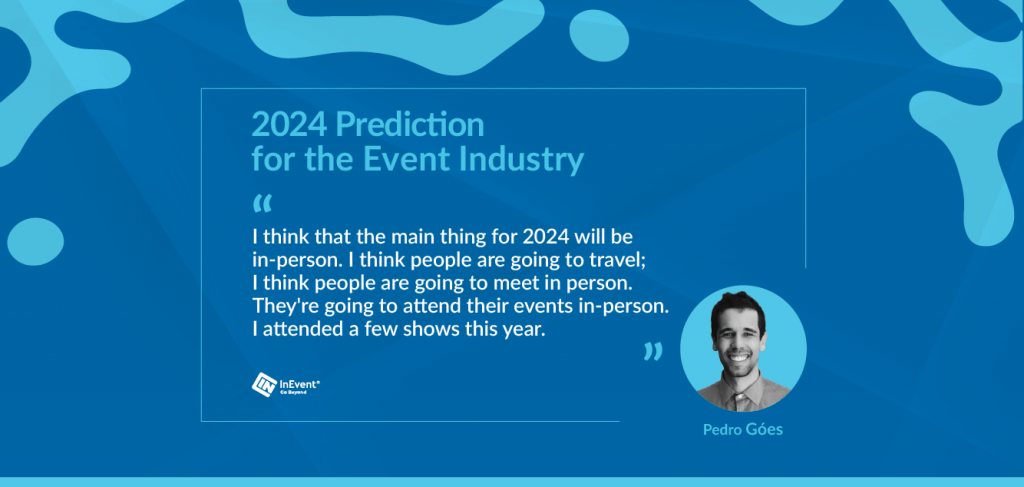
But I think that the main thing for 2024 will be in-person. I think people are going to travel; I think people are going to meet in person. They’re going to attend their events in-person. I attended a few shows this year. For example, IMEX was pretty busy. You know, they were overbooked. I have never seen IMEX overbooked in the last three or four years. A lot of other shows that we usually go to have also been overbooked over the last couple of months. So I think everyone is just back to how business was before the pandemic, in-person first. I think companies just need to innovate around that, being able to offer great products. Sometimes, they have to consolidate as well to come up with, you know, stronger groups to support clients in a broader way.
But yeah, I’m very bullish in 2024 on in-person. I think it will be a great year for companies specifically focused on that space. I think the growth will be nice, and that’s what we’re looking for, like great products and great projects together with our clients.
Elad Rosanski:
Yeah, yeah, I agree with you.
I hear the same. I was in IMEX, and I’m always talking to peers like yourself, trying to see kind of what they feel, you know, because at the end of the day, you talk to peers, you talk to the clients, and you try to understand, how 2024 will be, how the future looks like.
And I agree with you; people are no longer talking about virtual anymore. Webinars? Yes, but it’s kind of the same as it was before. Maybe a little more because people are more capable; you know, they have the skill set and also a lot of products like yourself that offer them ways to do webinars more easily. So yes, maybe a bit more webinar, but not instead of in-person, like just in addition to in-person.
About hybrid, you know, it really depends. I understand, and I agree with you. People understand that it’s an alternative. It’s not a must. It’s not that an in-person event has to be a hybrid event. No, totally not. You do see clients that have a lot of reach, you know, globally, that try to make it hybrid because they want other people to be able to watch.
However, I also heard another claim saying that if the client is doing hybrid, the audience won’t come in person, so they don’t want to offer them hybrid. Instead, they’ll record it and then show it post-event. Right. We see a lot of that people talking about. Yeah, we are creating great content in the event – let’s capture it, record it, and repurpose it post-event.
We see that a lot. My take is that it will be stronger than the live stream from events. Live streaming makes it extremely expensive and complex versus just recorded. I think most of the events will be recorded. Some of them will also do livestreams, and all of them will do in-person events. That’s my take on what I hear from clients.
Pedro Góes:
Another thing is that video is so hard. If someone comes and tells me video is not hard, I ask them how long they have been planning videos and events, and they always tell me six months. Then I understand why. Plan virtual events for three years, and you will understand the problems.
Think about this logically: You will be streaming video for one hour, and if the whole application, like the Internet, fails for one second and everything is delayed, everyone will freak out, right? But it’s something that you don’t see on other in-person products. For instance, nobody will complain if the badge printing system fails for 5 seconds. You just press retry and try to print again. If the thing runs out of paper, just put more paper, right? So, it’s something that the limits of the industry are much easier to work with if you are in person. Virtual is super hard because anything that happens on video, any failure, is really always like a blast, right?
So you have to be in control really well.
Another thing about video is that there are so many affordable solutions right there. You know, like, how are you going to compete with products like Zoom webinars? How much is that like $300? How will you be able to charge for, you know, $10,000 or $20,000 for a video stream when you have cheap products out there?
A lot of clients prefer to go with the cheaper options right now. That’s where I see a lot of clients using those cheap services for webinars. Only 10% or 5% of the market estimate is able to pay for high-end video productions like some companies out there offer. So that’s why I think there are more opportunities with in-person because I think video is hard; it’s always hard to do, and there are a lot of cheap options out there.
The markets are primed for in-person first, and there is more room for innovation and budget management.
Elad Rosanski:
I couldn’t agree more. Pedro, it was a pleasure. It was a pleasure to talk to you, discuss with you, and share ideas. You’re so talented and experienced in the market, and what you shared here today is very valuable. Hearing it from a CEO of a 200-employee company in the event tech industry is huge.
So thank you for that. Thank you for your time. I wish you a great holiday month; let’s say, hopefully, get re-energized, and yeah, let’s kill it for 2024. Let’s do it.
Pedro Góes:
That’s right. It was a pleasure talking to you. This was great. Thank you. Bye bye.
